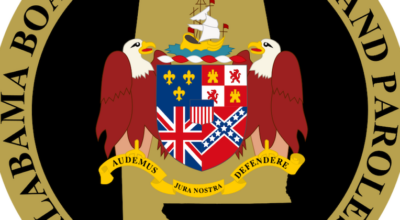Gulf Coast states prepare as Gustav strengthens
Published 1:34 pm Thursday, August 28, 2008
NEW ORLEANS (AP) – National Guard troops stand ready, batteries and water bottles are selling briskly, and one small-town mayor has spent a sleepless night worrying. The New Orleans area is skittishly watching as a storm marches across the Caribbean on the eve of Hurricane Katrina’s third anniversary.
With forecasters warning that a strengthening Gustav could slam into the Gulf Coast as a major hurricane early next week, a New Orleans still recovering from Hurricane Katrina’s devastating hit drew up evacuation plans.
“I’m panicking,” said Evelyn Fuselier of Chalmette, whose home was submerged in 14 feet of floodwater when Katrina hit. Fuselier said she’s been back home only a year and nervously watched as Gustav swirled toward the Gulf of Mexico. “I keep thinking, ‘Did the Corps fix the levees?,’ ‘Is my house going to flood again?’ … ‘Am I going to have to go through all this again?'”
Taking no chances, city officials began preliminary planning to evacuate and lock down the city in hopes of avoiding the catastrophe that followed Katrina in 2005.
New Orleans Mayor Ray Nagin left the Democratic National Convention in Denver to return home for the preparations. Gov. Bobby Jindal declared a state of emergency to lay the groundwork for federal assistance, and put 3,000 National Guard troops on standby.
U.S. Homeland Security Secretary Michael Chertoff is expected to meet with Jindal in Baton Rouge on Thursday and with Nagin in New Orleans later in the day, according to a department spokesman.
A day after stalling off Haiti’s coast, Gustav was closing in on Jamaica, with the center about 45 miles east of Kingston around 11 a.m. EDT Thursday. Gaining strength over warm Caribbean waters, Gustav was expected to again become a hurricane later Thursday, according to the National Hurricane Center. It said maximum sustained winds rose from about 50 mph to near 70 mph overnight.
Meanwhile, a new tropical storm, Hanna, formed farther east in the Atlantic.
Forecasters said Wednesday that Gustav could strengthen to a Category 3 hurricane with winds of 111 mph or higher in coming days before hitting somewhere between the Florida Panhandle and Texas.
If a Category 3 or stronger hurricane comes within 60 hours of the city, New Orleans plans to institute a mandatory evacuation order. Unlike Katrina, there will be no massive shelter at the Superdome, a plan designed to encourage residents to leave. Instead, the state has arranged for buses and trains to take people to safety.
It was unclear what would happen to stragglers. Jerry Sneed, the city’s emergency preparedness director, said officials are ready to move about 30,000 people. Nearly 8,000 people had signed up for transportation help by late Wednesday.
Hurricane Katrina struck New Orleans on Aug. 29, 2005, its storm surge blasting through the levees that protect the city. Eighty percent of the city was flooded. After the destruction, many people never returned, and the city’s population, around 310,000 people, is roughly two-thirds what it was before the storm, though estimates vary wildly.
The Army Corps of Engineers has since spent billions of dollars to improve the levee system, but because of two quiet hurricane seasons, the flood walls have never been tested. Floodgates have been installed on drainage canals to stop any storm surge from entering the city, and levees have been raised and strengthened with concrete in many places.
Robert Turner Jr., the regional levee director, said the levee system can handle a storm with the likelihood of occurring every 30 years, what the corps calls a 30-year storm. By comparison, Katrina was a 396-year storm.
Gustav formed Monday and roared ashore Tuesday as a Category 1 hurricane near the southern Haitian city of Jacmel with top winds near 90 mph, toppling palm trees and flooding the city’s Victorian buildings.
The storm triggered flooding and landslides that killed 23 people in the Caribbean. It weakened into a tropical storm and appeared headed for Jamaica, though it has begun to grow stronger again by drawing energy from warm, open water.
Scientists cautioned that the storm’s track and intensity were difficult to predict days in advance.
But in southern Louisiana, there was little else to do except prepare as if it were Katrina.
In Grand Isle, tractor loads of dirt and mud were being hauled in to fill portions of the levee system damaged by Katrina, said Grand Isle Mayor David Camardelle. The coastal community south of New Orleans historically is one of the first to evacuate when tropical weather threatens.
“I couldn’t sleep last night,” Camardelle said. “We just came back from so much.”
Emergency preparations also were under way along Mississippi’s coast. The eye of Hurricane Katrina pushed ashore near the small towns of Waveland and Bay St. Louis, Miss., and along the 70-mile coastline, roughly 65,000 homes were destroyed and thousands of businesses and casino barges were wiped out. Up to 5,000 temporary housing units are still in use, and emergency officials say the agency could decide as early as Thursday whether residents of those temporary homes should evacuate.
Meanwhile, Alabama Gov. Bob Riley said state agencies were keeping a close watch on Gustav as he urged his state’s Gulf coast residents to review personal emergency plans and enter storm-preparation mode.






